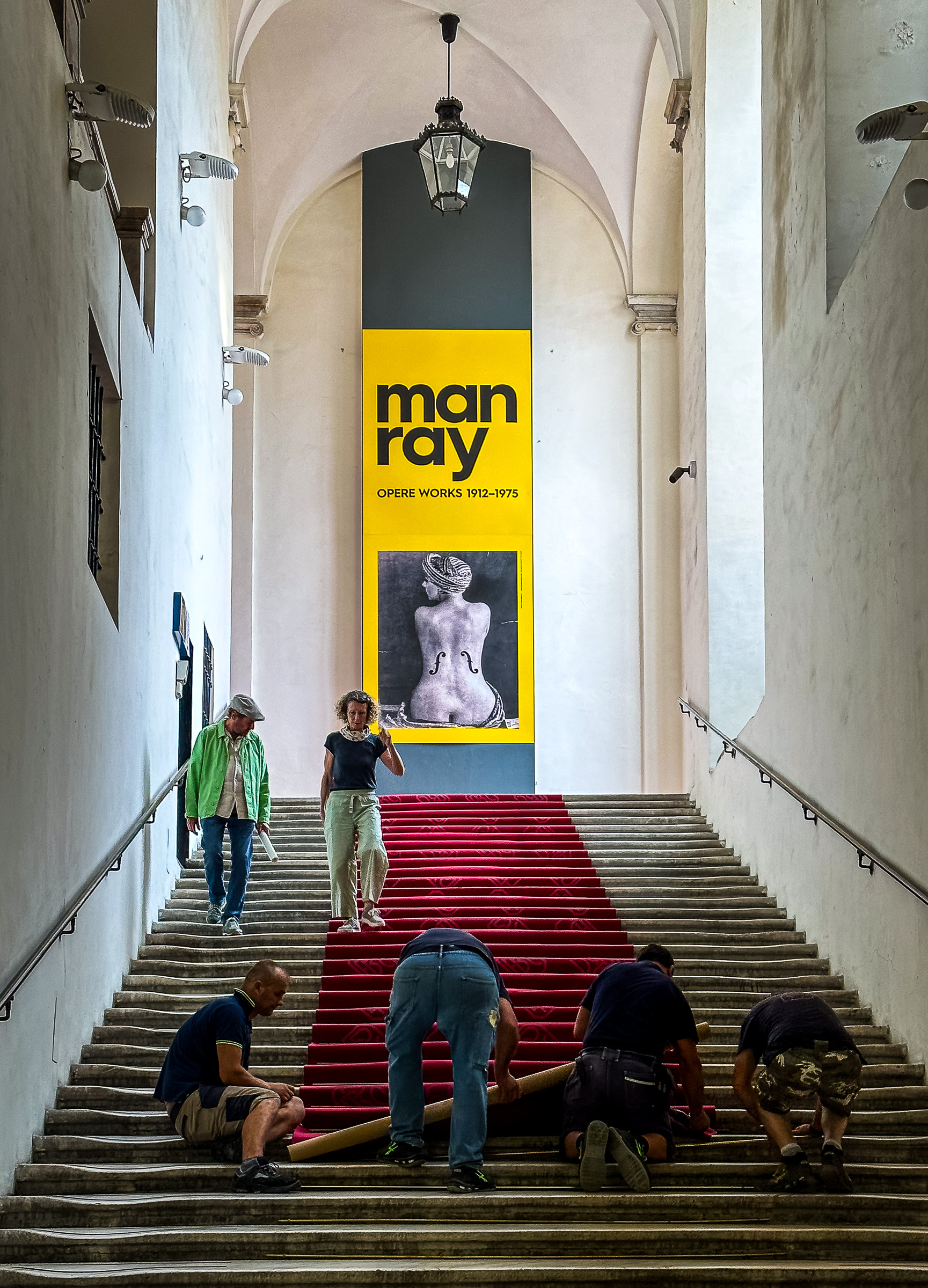
Doing Street Photography while visiting museums and exhibitions is one of my favorite things to do with a camera (or just my iPhone for that matter). Another opportunity arose during a recent visit to Genoa. The doge’s apartment in the Palazzo Ducale features an exhibition by Emmanuel Radnitzky, better known as Man Ray. The title image of the exhibition has already been featured in another recent post. Join me for a tour of Man Ray’s work. Check it out by clicking on the link below. A little disclaimer: posts should be treated as NSFW 😉

Born in Philadelphia in 1890, Man Ray was an American modernist artist who made significant contributions to the fields of photography, painting and sculpture. He is best known for his association with the Dada and Surrealist movements, as well as his innovative experimentation with photography, which led to the development of a unique technique and style.

In his teens he began his artistic career as a painter. In 1915, Emmanuel Radnitzky moved to New York City, where he became involved in the avant-garde art scene. It was at this time that he adopted the name Man Ray, which he felt better reflected his identity as an artist.

In the early 1920s, Man Ray moved to Paris, a center of artistic creativity, and became an active participant in the Dada movement. He collaborated with fellow artists and writers such as Marcel Duchamp, Tristan Tzara, and André Breton. Man Ray’s work from this period often incorporates elements of coincidence, irony, and humor, challenging traditional art forms.



Apart from photography, Man Ray also produces sculptures and paintings that incorporate his distinctive visual language. His sculptures often incorporate everyday objects and found materials, turning them into poetic and evocative works of art.

However, it was Man Ray’s pioneering work in photography that brought him international acclaim. He explored new techniques, such as solarization (a process that reverses pitch and creates a surreal effect) and rayograph (a cameraless photographic technique in which ordinary objects are exposed to light while placing them directly on photosensitive paper). This experimental method allowed him to create abstract compositions and dreamlike imagery. Many of these images are on display at this exhibition.


Throughout his career, Man Ray captured portraits of prominent figures from the worlds of art, fashion and literature, including Pablo Picasso, James Joyce and Coco Chanel. His portraits are often characterized by unconventional angles, lighting, and composition, which give them a sense of mystery and intrigue.
Man Ray’s contribution to the Surrealist movement was significant, both in terms of imagery and his involvement in Surrealist publications, which explored themes of desire, the unconscious, and the uncanny.

With the outbreak of World War II, Man Ray fled Europe and returned to the United States. He settled in Los Angeles, where he continued his artistic practice, focusing more on painting. In the 1950s, he also experimented with filmmaking, making several avant-garde films.
Man Ray’s work continues to influence and inspire contemporary artists. His innovative approach to photography, willingness to push boundaries and ability to incorporate multiple art forms have secured his position as one of the most important artists of the 20th century. His works can be found in museums and major collections around the world.

I have a little mixed feelings after visiting the exhibition. I find many of Man Ray’s portrait photographs interesting and inspiring. But there’s also a lot of crazy stuff on display that I don’t really relate to. If you want to see more of his work, as well as his sculptures and paintings, you’ll find plenty on the web. It’s no less enjoyable once again shooting street photography at an exhibition.
All photos taken with my iPhone 14 Pro. Post-processing (especially B&W conversion) in Lightroom Classic.
Have a nice Thursday
Marcus
Related post:
Instant Inspiration (13) – Picture in Exhibition
Another weekend – another photo exhibition
One Exhibition, one lens
StoNur on the Road – Fotografiska
